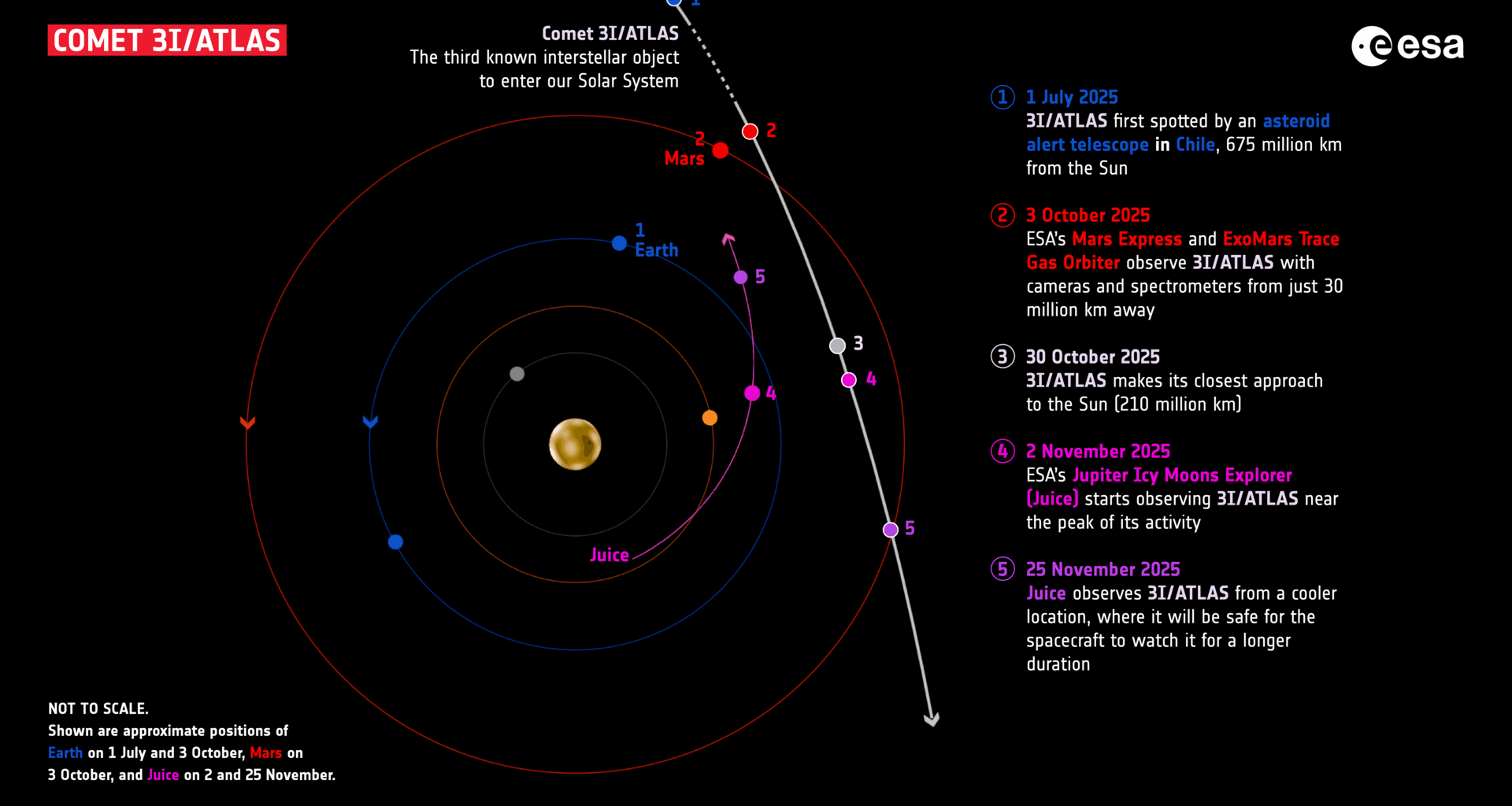Comet 3I/ATLAS was first spotted on 1 July 2025 by an Asteroid Terrestrial-impact Last Alert System (ATLAS) telescope in Río Hurtado, Chile.
Since then, Earth has been moving away from 3I/ATLAS as it approaches the Sun. The comet is now on the other side of the Sun, making it impossible to observe from Earth.
ESA is making the most of its interplanetary missions to observe the comet from much better vantage points.
Between 1 and 7 October, our Mars orbiters Mars Express and ExoMars Trace Gas Orbiter will observe the comet as it passes close to Mars, with the closest distance between the spacecraft and the comet being 30 million km on 3 October.
Then between 2 and 25 November ESA’s Jupiter Icy Moons Explorer (Juice) will observe the comet with various instruments. As Juice looks towards 3I/ATLAS so soon after its closest approach to the Sun, it is likely to have the best view of the comet in a very active state, with a bright halo around its nucleus and a long tail stretching out behind it.
Read our comet 3I/ATLAS frequently asked questions for more details on how our Mars and Jupiter missions will observe the comet.
Click here for the latest updates on ESA observations of 3I/ATLAS.
[Image description: Infographic showing the path of comet 3I/ATLAS, the third known interstellar object to enter our Solar System. It displays the orbits of Earth, Mars and the Juice spacecraft around the Sun, along with key dates and events as comet 3I/ATLAS travels through the inner Solar System in 2025. Coloured and numbered dots mark important observation points by telescopes and spacecraft.]

